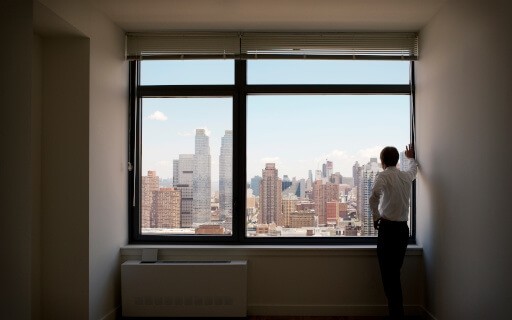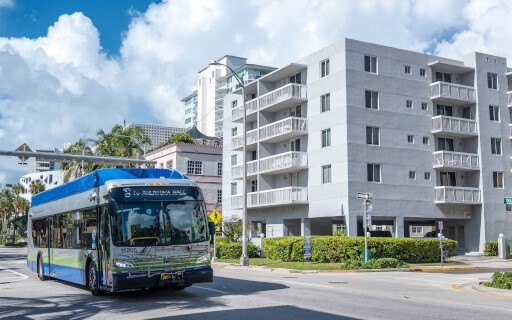One of your tenants has informed you that they have received a job offer across the country, so they won’t be renewing their lease. Thankfully, with your great advertisements, you have been able to find new potential tenants. But what happens after your former tenant moves out? What steps need to be completed before your new tenant can move in? Turning over your rental property is a part of being a landlord and knowing how to do it properly is very important.
What Is Tenant Turnover?
Tenant turnover is the process of conducting maintenance, cleaning, and signing a new tenant. The goal of tenant turnover is to restore the unit to its original condition (or better) so that a new tenant can move in. If you don’t properly turn over your rental property, you could face a small claims suit. As soon as your tenant gives a 60-day notice of non-renewal, the process of tenant turnover begins.
Here are nine steps to help you turn over your apartment or rental property.
1. Advertise Your Rental Property ASAP
Advertise the vacancy as soon as possible so you can have a new tenant in place that can move in once the current tenant moves out. The longer it takes to find a new tenant, the longer the apartment will sit vacant, which means you won’t be making any income from the space. When you list your property on Apartments.com, your rental will show up on our twelve network sites and will be exposed to millions of renters immediately. You don’t know how long it will take to get a new tenant so it’s best to be proactive and start early.
2. Schedule Vendors for Repairs
Similarly, you should begin scheduling any maintenance vendors such as a professional cleaning company or painting company. Booking vendors in advance will save you time because you won't be scrambling to find someone to clean the carpet when your tenant finally moves out. As soon as you receive notice from your tenant, set a move-out schedule. From there, you can set a time to begin repairs.
It’s recommended to begin repairs as soon as the old tenant moves out and continue fixing damage for at least a week (if needed) or until the new tenant moves in. Beginning repairs when the former tenant moves out will give you more time for cleaning, painting, and other upkeep. You’ll also be able to get the new tenant in faster because the service is already scheduled.
3. Schedule Showings and Begin Touring the Unit
Potential tenants will want to view the unit before moving in, so you’ll have to provide tours. Before you begin showing the rental, determine if you want to show the unit when it's occupied or unoccupied. Although an unoccupied unit means more time for repairs and less stress because you don’t have to coordinate with anyone, you will lose income the longer the unit sits vacant. Showing the rental with a tenant who still lives there means you will have to coordinate and provide notice based on your local laws, but you’ll save time and money when searching for a new tenant.
4. Final Walk-Through
Before you can let your new tenant move in, you must conduct a final walk-through inspection. As you walk through the unit, reference the notes, photos, and videos taken during the move-in inspection to help determine the damage that exceeds normal wear and tear. The tenant does not have to be present during the final walk-through, but if you deduct the cost of repairs from their security deposit, you must justify why in a letter.
Similar to the move-in walk-through, take photos and videos of the condition of the unit and any damages. Document any invoices or receipts you receive for repairs to illustrate costs. If you’re sued in small claims court, you will have to prove why you deducted from their deposit, so always work to protect yourself.
5. Make Repairs
Although every apartment will have a different amount of normal wear and tear or damage, there are a variety of maintenance tasks you should always complete to ensure your rental property is attractive to potential renters and up to par with any state or local requirements.
Now is a great time to make any renovations as well. It is possible to renovate when a tenant is living in a unit, but it’s much easier to get everything done when the property is empty. You also don’t want your tenant to be bothered by constant construction. Keep in mind that it might be worth the investment to renovate outdated cabinets or install new light fixtures because it will attract a wider pool of potential tenants. Some renovations can increase the amount of rent charged as well.
Here is a checklist for repairs to help you during the process:
- Fix anything that was listed as broken or damaged on the move-out checklist
- Renovate any outdated features (cabinets, countertops, toilets, flooring, tile in the shower, light fixtures, etc.)
- Inspect HVAC
- Change air filters
- Check for leaky drains and pipes, and other water damage
- Check drains for clogs
- Inspect water pressure
- Get plumbing inspected by a professional
- Check if all appliances are working (fridge, stove, oven, microwave, washer, dryer, etc.)
- Fix or replace appliances, if necessary (you might be able to donate, sell, or recycle appliances, depending on your local laws)
- Replace windows and window screens, if needed
- Tighten or loosen hardware (doorknobs, towel bars, handles on cabinets, etc.)
- Replace batteries in smoke and carbon monoxide detectors
- Replace lightbulbs
- Wipe walls before painting (always do this to remove any cobwebs, stains, dirt, and debris, which can prevent paint from sticking)
- Paint walls
You might be tempted to begin cleaning up during repairs, but it's best to wait until everything is completed since it's likely a mess will be made. If there is significant damage in the unit that is beyond normal wear and tear, you can deduct the costs from the tenant’s security deposit, just remember to properly document it and take photos and videos.
6. Clean the Unit
A deep clean can freshen up a space and it's also a safety precaution for your next tenant. Cleaning an entire apartment can get overwhelming, but you can always hire a professional cleaning company if you’re willing to spend some extra money. If you decide to clean yourself, focus on doing smaller tasks first and clean room by room.
Clean the floors last to ensure they’re spic and span before heading to the next room to clean. If you discover the rental property is excessively dirty, depending on state laws, you can also deduct cleaning costs from the security deposit. Remember to always document!
Here is a checklist for each area of your rental property to help you get everything sparkling clean.
Bathroom
- Sink and cabinets
- Vanity/mirrors
- Tub/shower/surround area
- Toilet
- Floors/carpet
Kitchen
- Sink and disposal
- Cabinets and drawers
- Countertops
- Microwave
- Dishwasher
- Stove and oven
- Fridge and freezer
- Floors/carpet
Entire Apartment/Rental
- Light fixtures
- Walls and doors*
- Laundry
- Closets and other storage areas
- Trim molding
- Windows and blinds
- Ceilings
- Floors/carpet
*Tip: try using a magic cleaning sponge to remove stubborn marks from walls and other surfaces.
A Note on Carpet
Depending on the condition of the carpet, it might just need a vacuum or shampoo. However, it is usually necessary to get a deep clean or completely replace the carpet. Carpet cleaning is highly recommended if you are pet-friendly because it will help with pest control, dander, fur, and odors. Although you can save money by removing or shampooing the carpet yourself, hiring a professional might be worth it. You don’t want potential renters turned away because of unusual scents! Whether you go DIY or hire a professional, keep in mind that it can take carpet anywhere between two to 24 hours for it to dry, depending on the type of carpet, humidity, and airflow. Plan accordingly.
If a Tenant Left Personal Property
Sometimes a tenant will leave items behind in the property. You can remove items so you can clean and make repairs, but you can’t just throw them away. In many states, you’re required by law to contact former tenants about personal property they left behind. Landlords are also required to hold the tenant’s belongings in a safe place for at least 30 days. Check your local laws before taking any action. Before removing the items, take photos and videos as part of your documentation. You should also get a witness to watch you remove and store the items. To prevent tenants from leaving personal property, you can include that you will charge a removal fee in your lease.
7. Change the Locks/Rekey the Apartment
You should always rekey locks once a tenant moves out. You can’t guarantee a former tenant didn’t make a copy of the keys, so create new ones. Rekeying protects your tenant from any unwarranted access to the unit. Conveniently, there are a variety of systems that allow you to easily rekey locks and create new keys. These rekeying systems are available at varying price points as well. Tip: always keep a set of keys for yourself in case of emergency repairs, routine inspections, or if your tenant gets locked out or loses their key.
8. Avoid Turnover
The best way to reduce costs altogether is reducing tenant turnover. Lease renewal means you don’t have to worry about finding new tenants or conducting repairs Routine maintenance, welcome packages, requiring quiet hours, and allowing pets are just a few ways you can increase tenant retention.
9. Print Our Checklist
You can create and print your own checklist and cross off items as you complete tasks, but here’s a template you can use:
Apartment Turnover Checklist TASK Completed? Advertise property Set move-out schedule for current tenant Schedule vendors for repairs Schedule property tours Begin showing rentals Complete final walk-through Begin making repairs/renovations:
- Fix broken items and/or damage on move-out checklist
- Complete renovations (if needed)
- Inspect HVAC
- Change air filters
- Check for leaky drains and pipes, and other water damage
- Check drains for clogs
- Inspect water pressure
- Get plumbing inspected by a professional
- Check, fix, and/or replace appliances:
- Stove
- Oven
- Fridge
- Microwave
- Washing machine
- Dryer
- Other
- Replace windows and window screens, if needed
- Tighten or loosen hardware
- Doorknobs
- Towel bar
- Toilet paper bar
- Cabinet handles
- Replace batteries in smoke and/or carbon monoxide detectors
- Replace lightbulbs
- Wipe walls for painting
Paint Clean unit:
- Bathroom
- Sink
- Cabinets
- Vanity and mirrors
- Tub, shower, and surrounding area
- Toilet
- Floors/carpet
- Kitchen
- Sink
- Garbage disposal
- Cabinets
- Drawers
- Countertops
- Microwave
- Dishwasher
- Stove
- Oven
- Fridge
- Freezer
- Floor/carpet
- Entire apartment/rental property
- Light fixtures
- Walls
- Doors
- Laundry
- Closets and other storage areas
- Trim molding
- Windows and blinds
- Ceilings
- Floors/carpet
Change locks and make new keys Complete procedures for Tenant Retention (fill in blanks)
Similar to many tasks as a landlord, turning over a rental property can be stressful if you’re not organized. Use the checklist to keep yourself on track and take everything one step at a time. Keep in mind that the overall goal is to restore the unit so potential renters can envision themselves in their new homes and everything will look good as new — or better!











